![]()
A large number of Malays in Johor accused Sultan Sir Ibrahim of conspiring with the Japanese in 1942, not knowing that the ruler was only looking out for their interests and those of the Palace.
The British narrated history in ways that subtly implied the conspiracy to undermine the role of Sir Ibrahim in the lead up to independence.
The late Tunku Abdul Rahman held that the Johor Palace was “the palace of firsts,” the place where Malay nationalism was truly born.
He insisted that the people were not ready to digest such facts, as “the history books were so thick with stories that were ‘choreographed’ the way the English saw fit, that nobody would have believed anything else.“

THE THIRD FORCE
The Japanese accepted Britain’s unconditional surrender of Singapore on the 15th of February 1942. The then British premier, Sir Winston Churchill, described the fall of the southernmost straits colony as “the worst disaster and largest capitulation in British history.” The Governor of the Straits Settlements undertook to cable London, stating that “there are now one million people within radius of three miles… Many dead lying in the streets and burial impossible. We are faced with total deprivation of water, which must result in pestilence…”
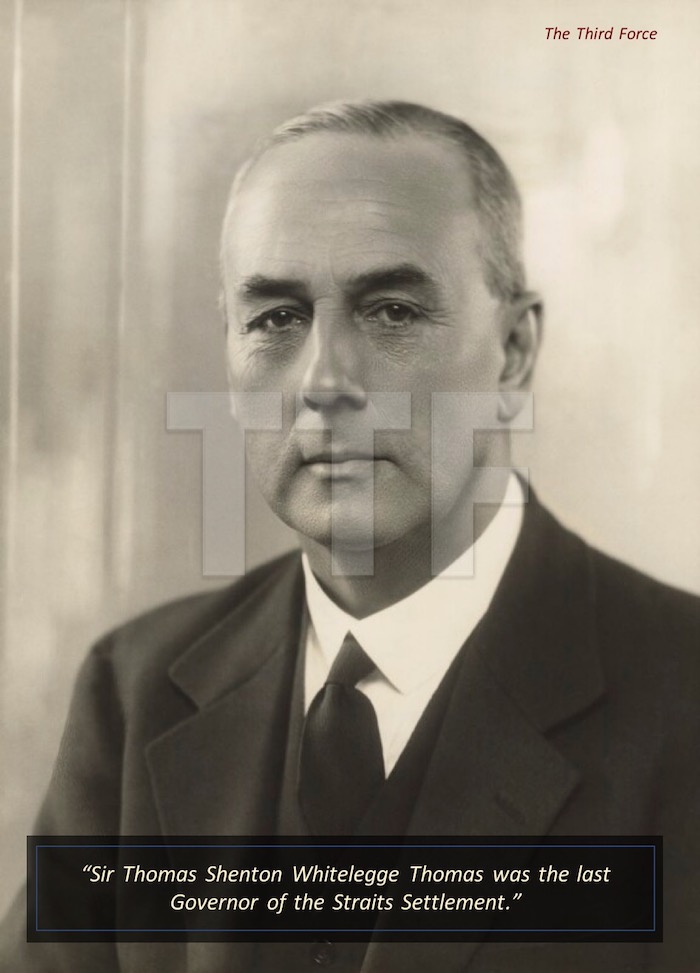
According to accounts by forensic pathologist Assoc. Prof Cuthbert Teo, Nipponese assault units landed on the night of the 8th of February 1942 “under cover of darkness on the north-west coast of Singapore.” The attack was planned by General Tomoyuki Yamashita and his Twenty-Fifth Army from Istana Bukit Serene in Johor (SEE PART 1, LINK BELOW). The Allied Force was led by a Lieutenant-General Arthur Percival, who had with him 85,000 soldiers, the equivalent of just over four divisions comprising largely of British, Indian and Australian infantry Battalions.
From the high grounds of Istana Bukit Serene and through intel provided by scout infiltrators, Yamshita’s men gained knowledge of Allied positions, including the whereabouts of Major-General B. W. Key’s “Northern Garrison” and Brigadier Harold Taylor’s “Western Infantry.” Some of the general’s men conveniently stationed themselves at the Johor state secretariat building – the Sultan Ibrahim Building – to plan for a full-fledged assault on Singapore. Shortly after 23:00 on the 8th of February 1942, Yamashita’s forces launched an artillery barrage compounded with shelling from the air by Mitsubishi G3M2 and the Mitsubishi G4M1 bombers.
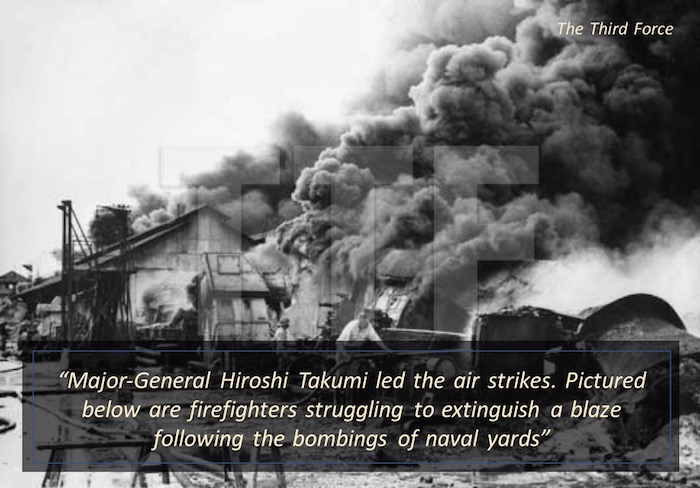
The battle raged on for a week. At 17.20 on the 15th of February 1942, Percival headed over to the Ford Motor Factory along the Bukit Timah Road to formally seek a cessation of hostilities. Yamashita, who was there to meet him, laid down some terms of surrender that the British Lieutenant-General acquiesced to instantly. At 23:40 that evening, the general declared Singapore to be a territory of the Empire of Japan and got Percival’s men to hoist the Japanese rising Sun Flag over the island’s (then) tallest building, the Cathay Building.
News of the surrender infuriated Malay refugees who had fled Johor to escape Yamashita’s incursion. The refugees, who had then almost doubled Singapore’s population, were told of Sultan Sir Ibrahim Al Masyhur’s close association with the general and how the Singapore conquest was planned from Bukit Serene. Even the orang-orang istana became apprehensive of the association when it became clear that Yamashita had no intention of establishing the United Malay Sultanate he and Tokugawa Yoshichika spoke of when they first arrived.
As the days passed into months, the whole idea of installing Sir Ibrahim as the figurehead of that Sultanate gradually evaporated into thin air. The orang-orang istana, tipped off by sympathetic scouts, made several attempts to dissuade the ruler from further engaging with Tokugawa. But their pleas went unheeded – to Sir Ibrahim, the only way he could hold out against attempts by Yamashita to undermine the Monarchical Institution was for him to maintain a cordial balance between his and Tokugawa’s interests.
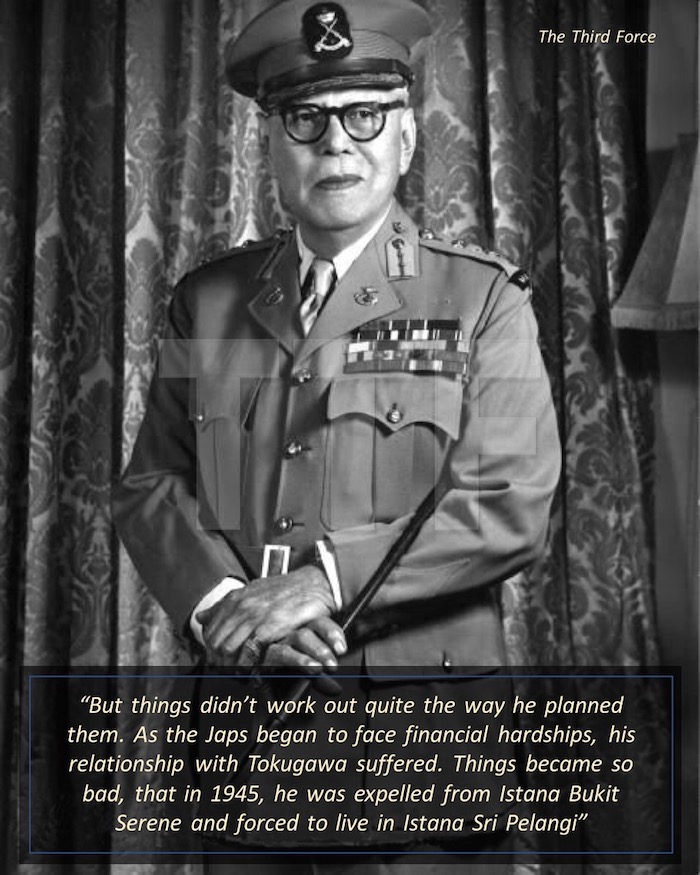
Thankfully, the imposition wasn’t for long.
On the 15th of August 1945, Emperor Hirohito gave a recorded radio address that announced the Japanese Empire’s unconditional surrender. British B-24 and Mosquito bombers quickly undertook to make known the announcement to the Malayan populace by dropping leaflets across the Malay peninsula. On the 7th of September 1945, the British Military Administration assigned Brigadier H. C. Willan to approach the Malay rulers to estimate their positions on centralised control in the Malay peninsula.
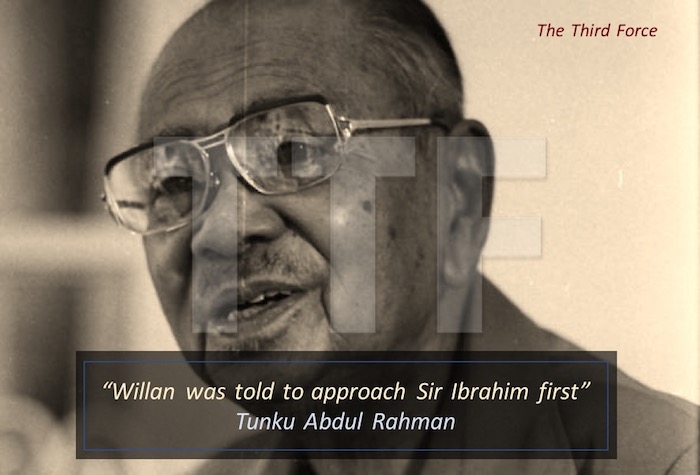
Based on the unpublished accounts of a late historian, the Tunku held that Willan was more concerned with the Palace of Johor than he was with anything else. It bothered the British that “Bukit Serene was the Launchpad for the Singapore conquest,” though Willan was aware that “Ibrahim did not have much of a choice but to accommodate Yamashita’s forces.”
According to the late Tunku, Britain was also concerned with the rise of Malay nationalism, which, contrary to what the books say, was inspired by Yamashita’s forces in Bukit Serene (SEE PART 1, LINK BELOW). “Malay nationalism was born in the Palace of Johor, and that’s a fact,” said the Tunku, adding, “The Johor Palace defined it…it (the Palace of Johor) was a Palace of Firsts.”
Willan met Sir Ibrahim on the 8th of September 1945.
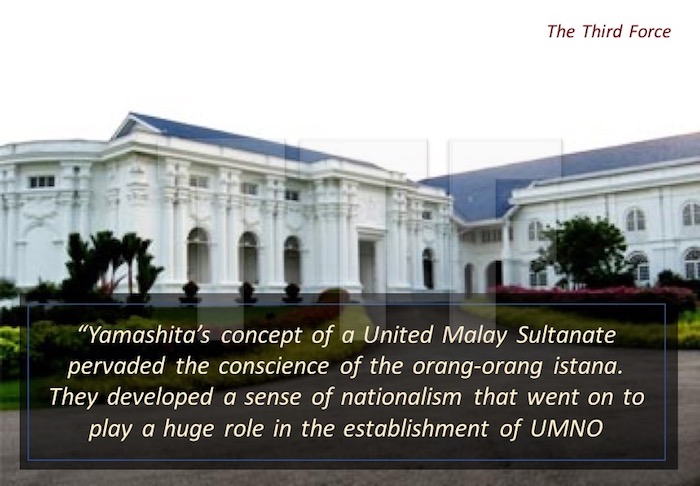
To be continued…
PAST ARTICLES IN THIS UMNO SERIES:
Part 1: Pearl Harbour, TMJ and the road towards UMNO – the story that’s never been told (Part 1)



